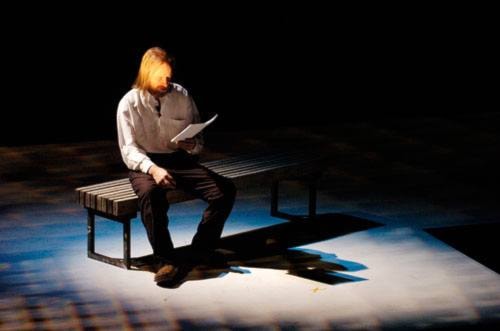In 1966, Iain Baxter& wrapped a whole house in plastic bags, right down to the turds floating in the toilet.
Canada’s first conceptual artist, who added the ‘&’ onto his last name a few years ago, called it Bagged Place and has been toying with ideas of place ever since.
Now, more than 40 years later, Baxter& is touring with Sense of Place, a print exhibition that opened at the Yukon Arts Centre Public Gallery this month.
The show is an eclectic collection of prints by artists from across Canada and the US.
The works weren’t necessarily created for the exhibit and tie loosely into the theme, at best.
Searching through the works for a piece by Baxter&, I came across a close up sketch of a middle-aged couple by Toronto artist George Hawkins. There was a clothesline with three sun hats and a human head hung out to dry by Windor’s Victor Romao and a sketch of a bear sitting on his bum watching a train go past by Rory O’Conner, from Tecumseh, Ontario.
The panel explains that Bear explores the displacement of nature in place of industry.
In one corner of the gallery, two wood panels lie on the floor, the shapes of a dead weasel, songbirds, mice, a partridge and a flying squirrel scanned onto them.
Titled What the Cat Brought Home, the work explores Quebec artist Lisa Driver’s relationship with her feline.
Another piece examines masculinity through the sketch of a bull, while a yellow T-shirt with a swing-set drawn onto it is meant to allow the wearer to take this childhood sense of place everywhere.
Baxter&‘s big blowup ‘&’ is on the back of the show’s catalogue.
But it’s not part of the Yukon’s exhibit.
In fact, it turns out Baxter& has nothing in the exhibit at all.
“I was hoping for the ‘&,’” said gallery director Mary Bradshaw.
Although none of his works are in the show, Baxter& still came to Whitehorse with Canadian writers Nino Ricci and Alistair MacLeod to hold a panel discussion on Sense of Place. (Ricci and MacLeod don’t have works in the show either, although they’re words are part of the catalogue.)
Not many attended the arts centre’s panel discussion, but those who did, identified with the midnight sun and the drama of winter.
MacLeod talked about growing up on the Saskatchewan prairie and returning to walk through overgrown forest looking for the mounds in the earth marking the foundation of his elementary school.
For Ricci, place is created in the pages of his books and found in the city landscape where he lives.
But place is also becoming part of cyberspace, a world Baxter& embraces and MacLeod ignores.
A university student in his hometown of Windsor, Ontario, is helping Baxter& put catalogue his life’s work online.
MacLeod has never sent an e-mail, although he has some younger family members who have been cajoled into helping the Luddite when technology demanded.
The aging author also writes all his work longhand, including his award-winning novel No Great Mischief.
Ricci uses a laptop to write, but still tries to pen out the first draft.
“I find the story has a better flow that way,” he said.
Baxter&, wearing a snappy black suit, a black baseball cap with an ‘&’ on the front and had an ‘&’ tattooed on each hand, explained that he added the & onto his name because it’s a good way to end things.
“And,” he said, ending the talk.
Itai Katz’s show Twelve Acts of Courage hangs alongside Sense of Place. The Israeli/Inuvik artist’s 12 big, colourful paintings deal with dreamtime, still life, hyenas and, of course, courage.
Both shows run until October 29th.
Contact Genesee Keevil at gkeevil@yukon-news.com
